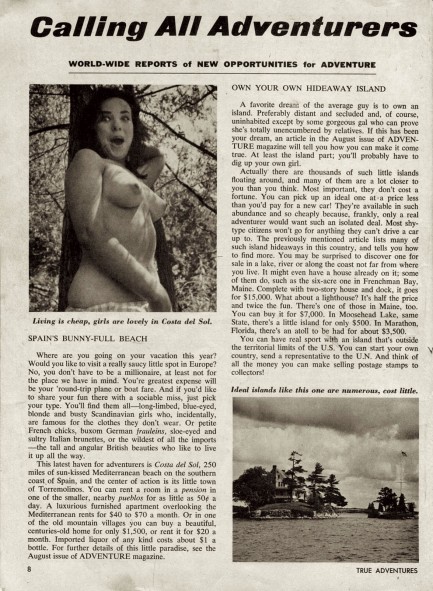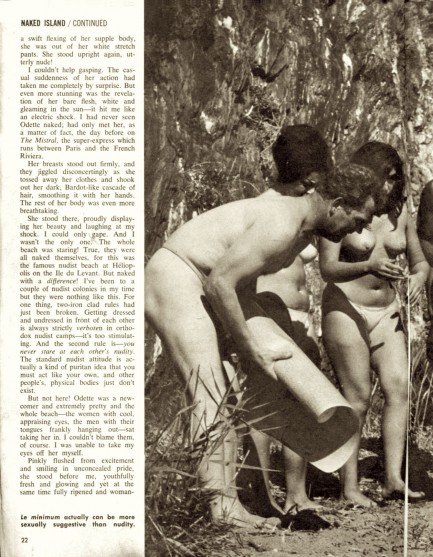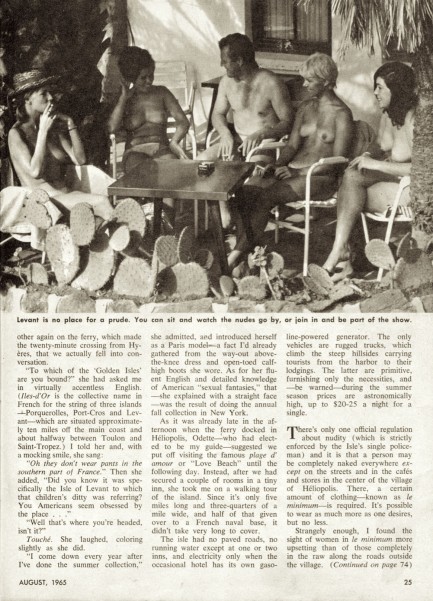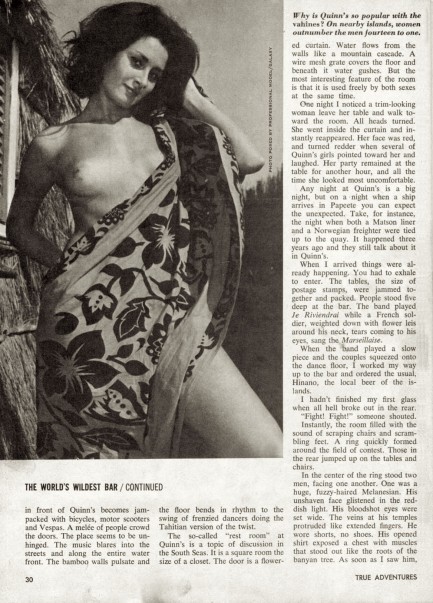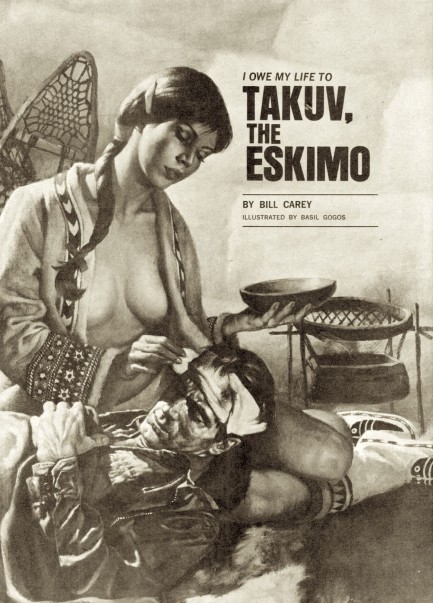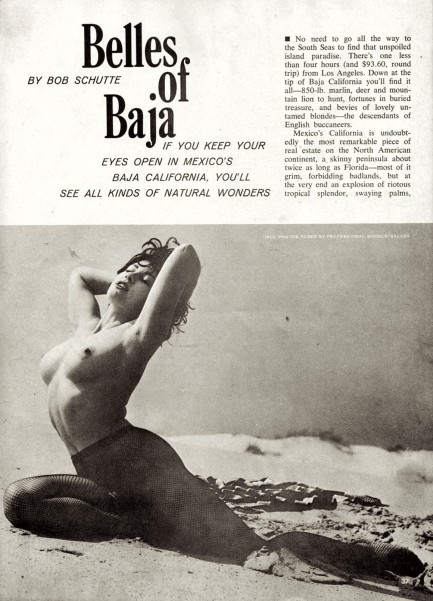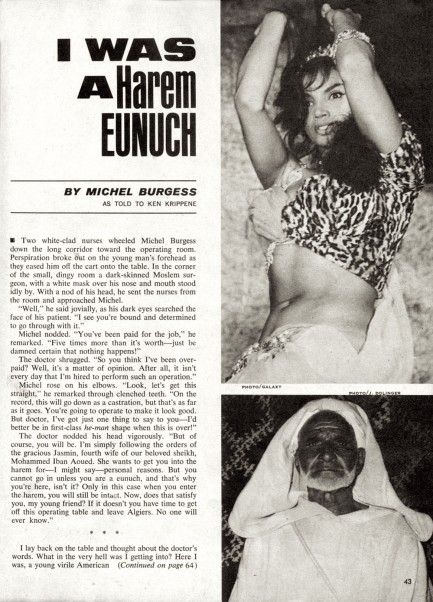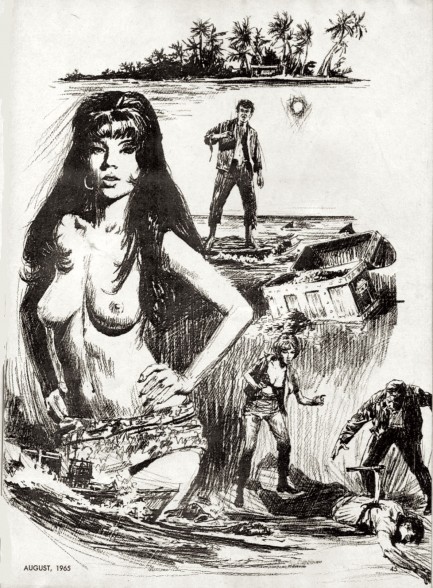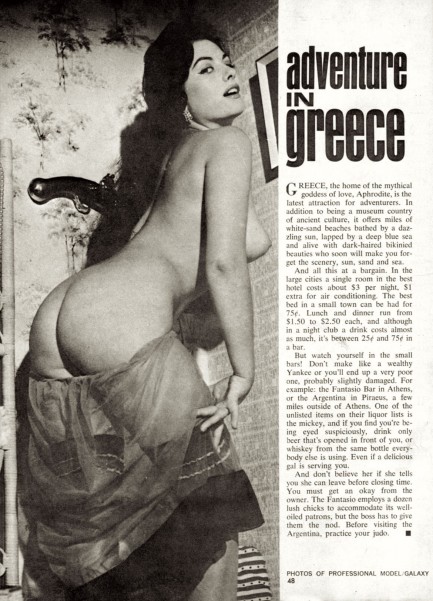 The king of tabloids sets its sights on the Queen of Greece. 
Every month when Confidential magazine hit newsstands, we imagine Hollywood celebrities receiving the bad news that they'd made the cover, and going, “Shit.” This issue published in January 1964 features Elizabeth Taylor, Richard Burton, Frank Sinatra, and Jill St. John. The first three members of that group probably took the news in stride, since they were all tabloid staples by then. St. John wasn't quite at their level, but her links with Sinatra kept her in the scandal sheets for a while too.
A person who wasn't used to Confidential's attentions was Frederica of Hanover, who at the time was Queen Consort of Greece—which is just a fancy way of saying she was married to the King of Greece. Confidential says she was a Nazi, a pretty serious charge, needless to say. Was she? Well, her grandfather was Kaiser Wilhelm II, as a girl she was a member of Bund Deutscher Mädel, which was a branch of the Hitler Youth, and she had brothers in the SS. Also, back in 1934 Adolf Hitler wanted to link the British and German royal houses, and tried to pressure Frederica's parents into arranging for the seventeen-year-old girl to marry the Prince of Wales, Edward VIII. And as Queen Consort she made a habit of meddling in Greek politics in ways that made clear she was not a fan of democracy. None of that is a particularly good look.
She had defenders, though, who believed that for a person in her position it would have been impossible not to have been a member of certain groups and to have socialized with Nazis. It's interesting, isn't it, how the rich and powerful always benefit from a special set of excuses? People can't really expect her to have made a stand, can they? But the excuse is hollow. As a high ranking royal she could have avoided anything she wished. Membership in organizations when she was a little girl is one thing, but as an adult she could have denounced Nazism with damage to her reputation the only potential result. A damaged reputation is no small thing, but if we expect resistance from people who'd have been imprisoned or shot for doing so, we should probably expect the same from people who would have suffered mostly dirty looks.
Confidential focuses on Frederica's July 1963 visit to England. The visit was no big surprise—Frederica, her husband King Paul of Greece, Queen Elizabeth, and her husband Prince Philip, were all related. They were all direct descendants of Queen Victoria. Monarchy is a funny thing, isn't it? The visit triggered a protest of about three thousand British leftists that was violently broken up by five thousand police. The protestors carried banners that said, “Down with the Nazi Queen.” After mentioning this fiasco, Confidential delves into Frederica's history, some of which we've outlined above, then loops back to the protests, which she blamed on the British press. But she had already reached a level of notoriety that usually brought out protestors who loudly booed her, particularly in Greece. She eventually retreated from public life, became a Buddhist, and died early at age sixty-three.
Confidential's unexpected exposé on Frederica wasn't out of character for the magazine. It was the top tabloid dog in a very large kennel. It had an expansive staff, serious reporters, hundreds of informers spread across the U.S. and Britain, and published stories about heavy hitters from all sectors of society. It had a regressive political agenda, as its article filled with terrible slander against gays and lesbians makes clear, but even with its rightward slant it took pains to keep its reporting framework factual. That makes it a priceless source of contemporaneous info about public figures, particularly of the Hollywood variety. We doubt we'll ever stop buying it, because we never know who we'll find inside. Twenty-plus scans below. 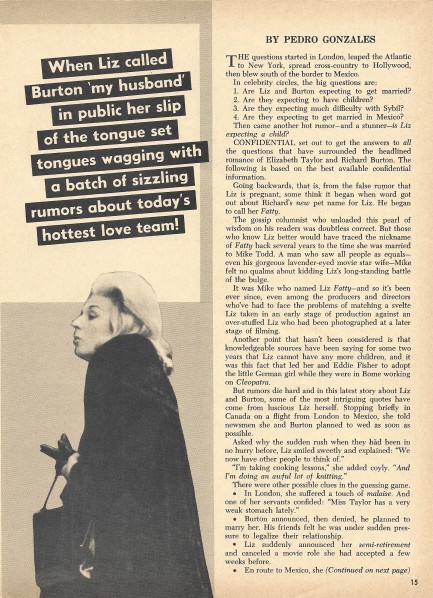          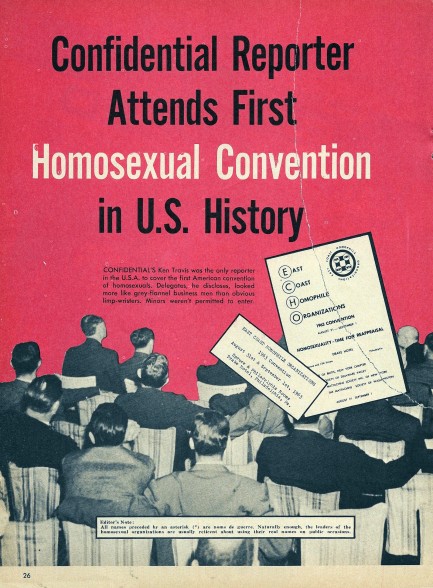   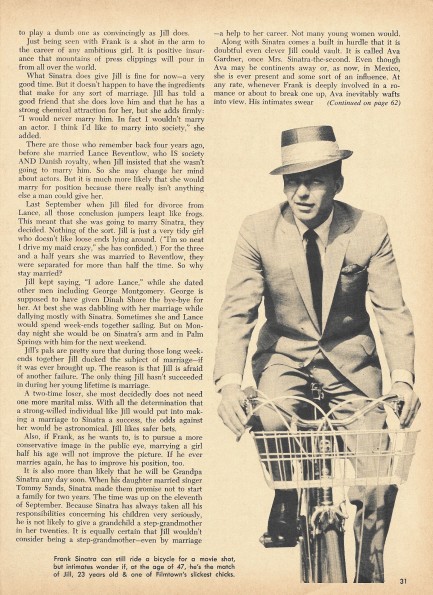  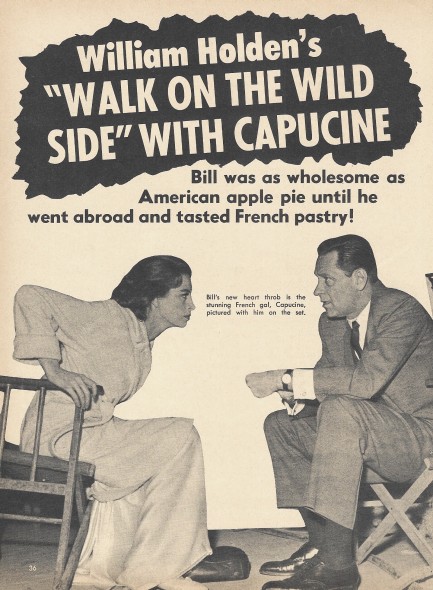  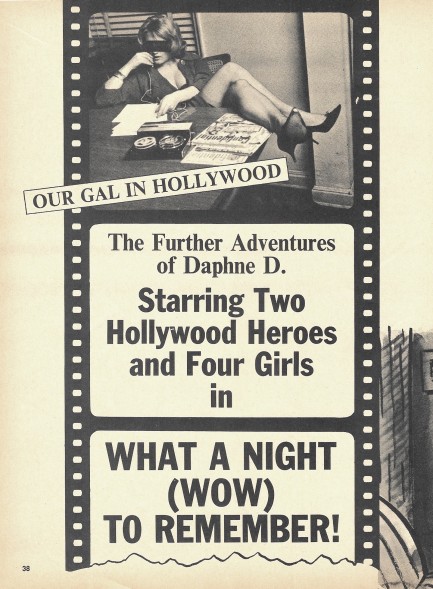 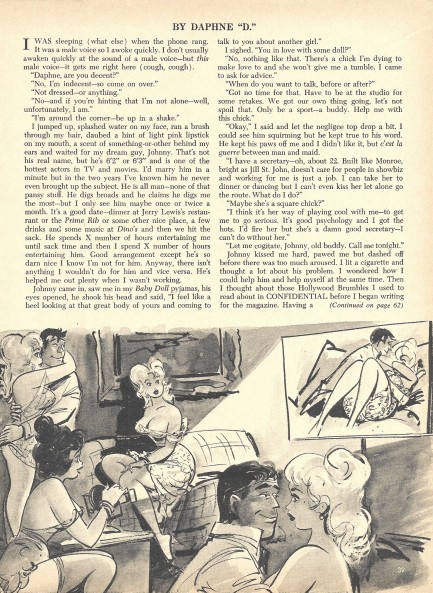  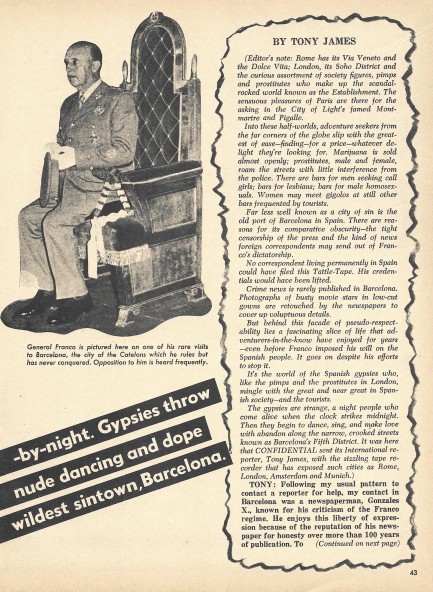 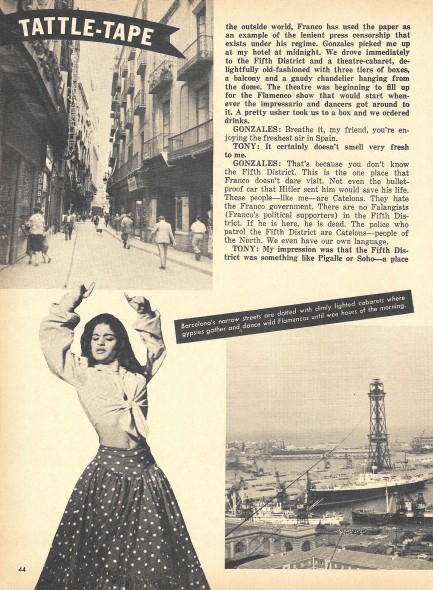
 The Devil went down to Southeast Asia looking for fortunes to steal. 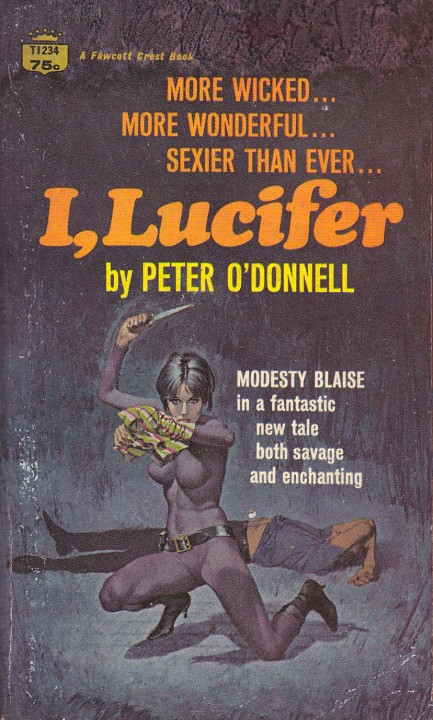
1969's I, Lucifer is Peter O'Donnell's third Modesty Blaise novel, and it's a series we're going through mainly to highlight the great cover art by Robert McGinnis. He didn't illustrate all the books. In fact, this might be the last, which means we'll probably move on to other authors. But that won't be because the Blaise books aren't good. In fact, for the sexy spy genre they're top notch—exotically located, compellingly plotted, and peopled by wacky Bond-style supervillains. Case in point: the titular character in I, Lucifer is a man suffering from a psychotic delusion that he's Satan. The funny part is he isn't evil. The real evil guy is Seff, the opportunist who launches a global extortion scheme that hinges on faux-Lucifer's participation even though his delusion prevents him having a clue what he's really doing. Lucifer might be the only villain we've encountered in a novel who's a victim.
When Seff's murderous extortion hits too close to home for Modesty, she and sidekick Willie Garvin gear up and eventually end up in the Philippines, where they right some wrongs, explosively. As usual Modesty uses sex to get over on the bad guys, and it's a major part of what readers enjoyed about the series. At one point she ponders whether a colleague thinks she's promiscuous. Well, no, she isn't by 1969 standards. But the joy of literature is she can be unpromiscuous, yet we can be there in the room for every one of her widely spaced encounters. This book is particularly amusing along those lines, as it brings two of Modesty's lovers together to be uncomfortable and/or jealous as they're displaced by a third. But sleaze fans will need to look elsewhere. O'Donnell is subtle—if not poetic—with his sex scenes.
Though the sexual aspects of Modesty Blaise were a major attraction of the novels, we enjoy even more the tactical nature of O'Donnell's action, which is probably an influence from his military service in Iran, Syria, Egypt, Greece and other places. It's also probably why so much of the Blaise series is connected to that region. While the tales are always exotic, this entry is even wilder than usual. How wild? It involves precognition, trained dolphins, Moro mercenaries, and body implants that kill remotely, yet it all works. That's because as always, in the center of the chaos, you have Blaise and Garvin, perfect friends, platonic soulmates, and two armed and extremely deadly halves of a razor sharp fighting machine. Abandon all hope ye who cross them.
 Schell, Mercouri, and Ustinov plan a field trip to the local museum. 
This French promo poster was made for the big screen Technicolor thriller Topkapi, which was based on a novel by Eric Ambler, who was such a popular author that the book was optioned before it even hit bookstores. The sedateness of the poster, which was painted by Yves Thos and René Ferracci, belies how outlandish the movie is at points. It starred Greek actress Melina Mercouri, British actor Peter Ustinov, and Austrian actor Maximilian Schell, with American Jules Dassin in the director's chair, filming mainly in Istanbul and using the location to voyeuristic effect as he documents exotic aspects of Turkish life. Inside all the window dressing is a heist flick about a group intent on stealing a priceless jewel encrusted dagger from the Topkapi Palace Museum. Aspects of this will look familiar to fans of the Mission: Impossible films, but Dassin adds extravagances such as direct-to-audience narration by Mercouri, a touch of Hitchcockian vertigo, and some overly broad comedic digressions that make the final result thrilling and bizarre in equal parts. While we had issues with the movie, who are we to argue with the top critics of the day? They mostly liked it and audiences did too. Topkapi had its world premiere in France today in 1965.   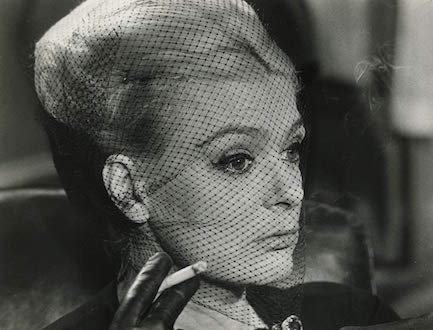     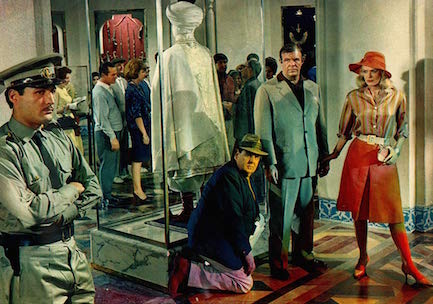 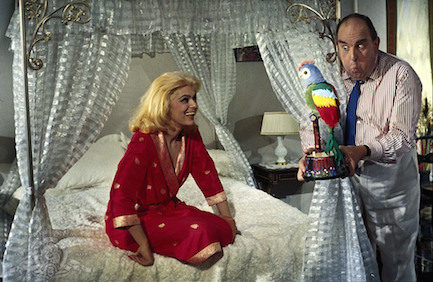 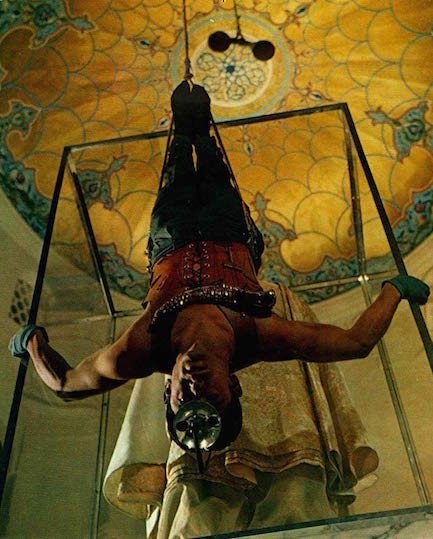  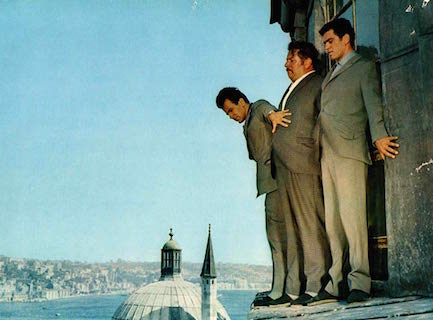    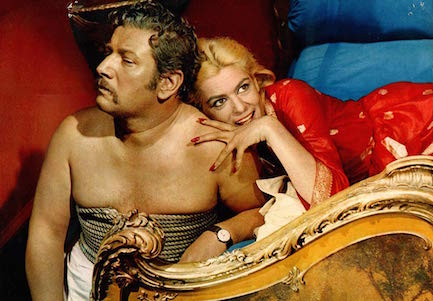  
 Gemser flick needs to be put someplace the sun doesn't shine. 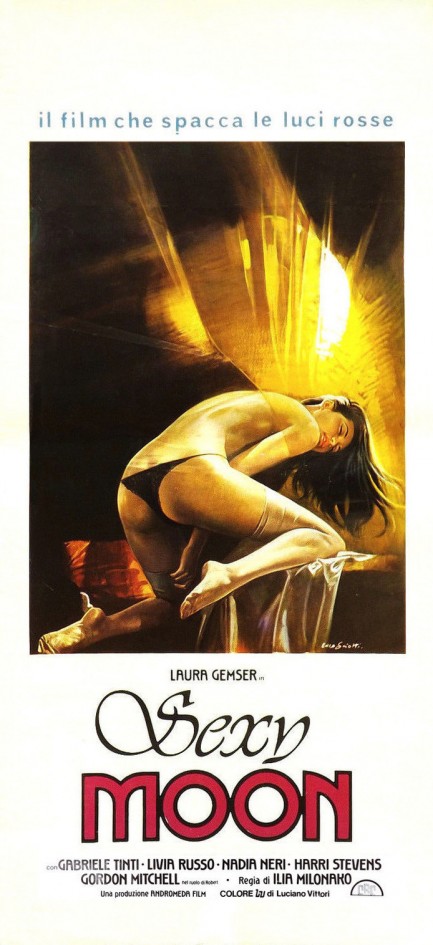
Laura Gemser made many films, in which she mainly lost her clothes in exotic locales, and in 1980's Sexy Moon the Gemser world tour hits the island of Cyprus. First things first—the alternate titles. They include, but are not limited to, I mavri Emmanouella, which was the original Greek title, Secrets érotiques d'Emmanuelle, Emanuelle: Queen Bitch, Emanuelle: Queen of Sados, and Emanuelle's Daughter. Those last three were the titles for various English speaking countries, while Sexy Moon, interestingly, was what the film played as in Italy, where it opened today in 1980. So you're actually looking at the film's Italian poster above, and a nice one it is, painted by Enzo Sciotti, the brush behind more than 3,000 movie promos.
This was Gemser' s eleventh Emanuelle outing, depending on how you number them—she starred in two movies that had “Emanuelle” in the titles but no character in the films with that name. So some might say this was her ninth Emanuelle film. Whatever. The important aspect here is that the writers were running out of interesting things for her to do. By the time Sexy Moon came along Gemser couldn't merely be ravished by hairy Eurostuds, so after besting cannibals, becoming a nun, and smashing a prostitution ring, her handlers decided to have her play an unhappy wife who has her terrible husband murdered. At that point she becomes guardian to the departed's now rich daughter, who's played by Livia Russo.
Russo could, in some slow developing genetic universe, be eighteen, but she's more likely fifteen, which means we were ambushed by her nudity, which is both sexual and, later, violent in nature. We suspect the only reason this film isn't illegal everywhere is because nobody has a firm record of Russo's age—least of all her, since she dropped off the face of the planet right after Sexy Moon wrapped. It was a more daring time artistically. We mention that often. And it's just acting. We get that. But having a possible mid-teen even act a rape scene is sadistic. We recommend skipping this one. Sexy Moon, which turned out not to be sexy at all, premiered in Italy today in 1980.     
 Two's company, three's a love triangle. 
Above is a Japanese poster for the Greek sexploitation flick Anilikes amartoles, which played in English speaking countries as Sexual Eroticism. We can't find any record of the movie ever being called Sex Obsessed, but apparently it was, since it's right there on the poster. The Greek title translates to something like “juvenile sinners,” which seems straightforward enough, but we know nothing about the movie itself except that it opened in Greece sometime this month in 1971, and it starred Dora Sitzani in a story about a fisherman whose girlfriend piques the interest of a rich playboy. So we're fishing for answers. Greeks—step up and post some info on this one.
 You're wondering how I got this thing stuck in my panties? It defies reason. 
The pulpification of ancient literature takes another strange turn as Edizioni Le Lucciole presents this 1970 paperback L'antiragione, or “the anti-reason,” which, incredibly, is a collection of writings by the Greek astronomer and mathematician Aristarchus of Samos, the guy who lived from 310 to 230 B.C. and presented the first model that placed the Sun at the center of the known universe with the Earth in orbit around it. Yeah. And when you can solve a mystery that vast, the question of how a femme fatale got a hoop stuck in her undies is really nothing. The art, which conversely is really something, is by the always great Benedetto Caroselli.
 Bad girls, sad girls, you're such dirty bad girls. 
It's been five years since our last National Tattler, but we're returning to it because this cover published today in 1967 caught our eye. There were only two types of lesbians in mid-century tabloids—those to be converted to hetero love, and the dangerous kind. Tattler claims to have caught wind of a gang of the dangerous kind, rapists no less, and bikers to boot. We have our doubts. In addition to brutal lesbians you get Melina Mercouri kicked out of Greece by fascists. This story is actually true. Mercouri helped bring international attention to the cabal of colonels who had illegally taken over the country and in retaliation they revoked her citizenship and confiscated her property. But Mercouri outlasted the military junta, resettled in Greece in 1974, and later became the country's minister of culture.
 How’s about we skip the marriage and you stay wild? 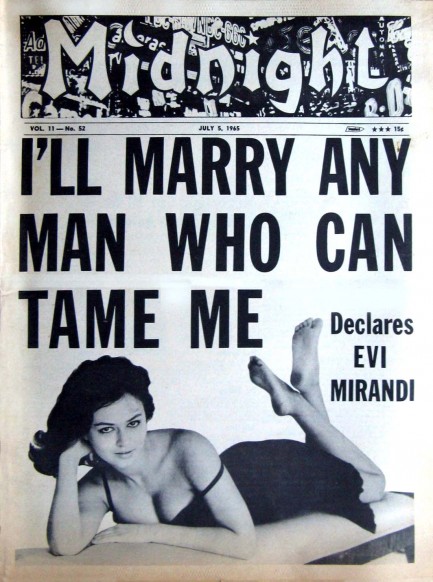
Today we have yet another cover of the tabloid Midnight, this time with Greek actress Evi Mirandi, better known as Evi Marandi, declaring she’ll marry any man who can tame her. We first encountered her a couple of years ago inside this issue of The National Star Chronicle, where she said “It’s easy to keep a man—if you have enough bed appeal,” and added that, “Every woman is a natural temptress.” So that raises a crucial question: Would you really want to tame a person like that?

|
 |

The headlines that mattered yesteryear.
2003—Hope Dies
Film legend Bob Hope dies of pneumonia two months after celebrating his 100th birthday. 1945—Churchill Given the Sack
In spite of admiring Winston Churchill as a great wartime leader, Britons elect
Clement Attlee the nation's new prime minister in a sweeping victory for the Labour Party over the Conservatives. 1952—Evita Peron Dies
Eva Duarte de Peron, aka Evita, wife of the president of the Argentine Republic, dies from cancer at age 33. Evita had brought the working classes into a position of political power never witnessed before, but was hated by the nation's powerful military class. She is lain to rest in Milan, Italy in a secret grave under a nun's name, but is eventually returned to Argentina for reburial beside her husband in 1974. 1943—Mussolini Calls It Quits
Italian dictator Benito Mussolini steps down as head of the armed forces and the government. It soon becomes clear that Il Duce did not relinquish power voluntarily, but was forced to resign after former Fascist colleagues turned against him. He is later installed by Germany as leader of the Italian Social Republic in the north of the country, but is killed by partisans in 1945.
|

|
|

It's easy. We have an uploader that makes it a snap. Use it to submit your art, text, header, and subhead. Your post can be funny, serious, or anything in between, as long as it's vintage pulp. You'll get a byline and experience the fleeting pride of free authorship. We'll edit your post for typos, but the rest is up to you. Click here to give us your best shot.

|
|










































































